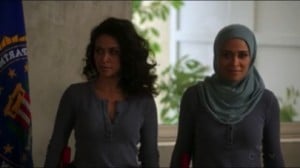The images that Afghanistan conjures are usually ones that mirror front-page stories of newspapers around the world: armed Taliban crouching at the entry of a mountain cave, women in burqas, and images of public stonings are just a few that are constantly associated with the country.
 HBO is schedule to air a two-part documentary that paints a broader picture of Afghanistan and its women. The first part titled, “Afghan Star,” named for Afghanistan’s first televised singing competition, follows the final contestants—two of which are women—as they come closer to becoming the first “Afghan Star.”
HBO is schedule to air a two-part documentary that paints a broader picture of Afghanistan and its women. The first part titled, “Afghan Star,” named for Afghanistan’s first televised singing competition, follows the final contestants—two of which are women—as they come closer to becoming the first “Afghan Star.”
The second part, titled “Silencing the Fallen Afghan Star,” follows the story of one of the two final female contestants, Setara, who becomes notorious for her “dance moves” and “liberal” attitude while on Afghan Star. This part focuses on Setara’s life after she is eliminated from the competition.
This documentary portrays Afghan women as anything but a homogenous group, unlike the futile efforts of mainstream media to depict these women accurately. The film strays from the overused and stereotypical representation of Afghan women as victims (either cognizant or unaware of their victimization). Specifically, it doesn’t present them as victims of religion or of Afghan men in general, while still providing a space for frank and honest discussions regarding problems of governance and social injustice that seem to prevail in certain parts of Afghanistan.
Although there are only two female contestants in the documentary and a handful of other females, from fans to female relatives of the two contestants, viewers can get a glimpse of the diversity of Afghanistan’s women. We see women on film with hijab, niqab, burqa or completely unveiled. Each wears a different style of clothing, ranging from jeans and t-shirts to bright blue burqas to colorful shilvar kamis, (tunic and pant combination). Most of the women are from different ethnic groups and different regions of Afghanistan, which plays a big role in determining what is considered to be “appropriate” dress. This fact is reiterated throughout the documentary in its portrayal of the divergent dress and attitudes of the two female contestants, Lema and Setara.
Lema Sahar is from the region of Kandahar, Afghanistan. Lema, portrayed as the more conservative of the two female contestants, is a Pushtun woman who mainly sings traditional Afghan songs during the competition. She says that where she comes from, women wear the burqa. When she went to Kabul for the first time, women told her not wear a burqa because she will look like a “suicide bomber.” It is interesting to see how even among the women of Afghanistan there is a tendency to stereotype one another based on dress or locality.
In contrast, Setara Hussainzada is from Herat City, Afghanistan. She sings more pop songs and dances while on stage, something that Lema constantly expresses her disapproval of. She is very open in expressing her opinions about life, saying very candidly that she believes that there is no difference between a man and a woman. They often show her in the beauty salon getting her hair and makeup done before shows.
Throughout the film, viewers get a sense that Afghan women do not see themselves as victims, nor are they simply oblivious to certain social injustices and difficulties they face.
For example, both Lema and Setara must take music lessons in secret, despite being on a much-publicized TV show, for fear that the Taliban may target their homes. Setara specifically faces a lot of criticism after the competition because of her dance moves and leaves Afghanistan for a short while to continue her music career. After she returns, she is always in public with a bodyguard and arms herself at all times.
Despite these facts, the women are portrayed as resilient and autonomous. Their hardships do not reduce them to helpless victims of inequality, but instead they view the whole of Afghanistan, including Afghan men, as a people who must constantly work in unity to change their circumstances.
An example of this unwavering attitude is perhaps seen most markedly in the family of fans followed in the documentary. At the taping of the show’s finale, a man lightheartedly asks the women of the family where their headscarves are. They reply by saying they are not wearing them because they want to dress up and enjoy themselves. The youngest daughter adds emphatically, “I am not scared of the Taliban!”
The documentary also demonstrates the often overlooked fact that the Taliban’s authority does not stretch over the whole of Afghanistan—it is mainly the fringe cities of the country which are most effected and have the least accountability as far as social and economical governance are concerned.
HBO’s documentary allows viewers to see the reality that Afghans of different ethnic backgrounds and from different regions face on a daily basis. While it is hard to ignore the fact that there is a constant underlying threat from the Taliban and that because of this, the entire population (not just women) is limited in certain movements, this frank account steers away from representations of Afghan women as weak and oppressed victims, unable to change their circumstances or their lives. Instead, it points to the greater picture of a country ready to combat threatening forces and forgo notions of religious extremism with an attitude of unity, even if this attitude is facilitated through music, rather than politics or religion.
Afghan Star and Silencing the Fallen Afghan Star will air today on HBO.











